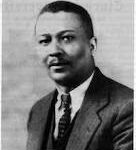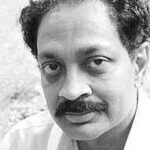Kenneth Clark, born in 1914, grew up in Harlem, N.Y.. Clark was a psychologist and a Civil Rights Activist. He is most well known for the famous doll studies conducted by himself and his wife, Mamie Phipps Clark. The thesis behind this study, “The Development of Consciousness of Self in Negro Preschool Children,” was actually written by Mamie while she was obtaining her master’s degree. Clark took an interest in her research and became a partner in the doll studies, suggesting that they also look at self-identification in African American children.
During the doll study, Clark and his wife would ask African American and White children to show them a doll based on a series of statements:
- “Show me the doll that’s a white doll.”
- “Show me the doll that’s a brown doll.”
- “Show me the doll that you like to play with.”
- “Show me the doll that’s a nice doll.”
- “Show me the doll that’s a bad doll.”
- “Show me the doll that looks like you.”
Clark explained in an interview that some African American children were so upset with their answer to the last question that they would cry, leave the room, or refuse to answer. The findings from this experiment showed the negative effects segregation had on African American children. While studying self-identification, they also found high amounts of internalized racism.
Their findings were used in the ruling of Brown v. Board of Education, ending racial segregation in American public schools.
In 1946, Clark and his wife opened the Northside Center for Child Development in his hometown of Harlem. It was one of the first child guidance centers in the area to offer families psychological and casework services. The Northside Center for Child Development is still running today and has been helping children develop resilience, confidence, and self-worth for over 70 years.
The Clarks were the first African Americans to receive a PhD in psychology from Columbia. Clark was head of the Board of Education in New York City. He worked hard to integrate schools, decrease class sizes, improve curriculum, and update facilities. He was also the first African American president of the American Psychological Association.
More resources:
http://www.cnn.com/2010/US/05/13/doll.study/index.html
https://www.northsidecenter.org/our-mission.html
http://digital.wustl.edu/cgi/t/text/text-idx?c=eop;cc=eop;rgn=main;view=text;idno=cla0015.0289.020
http://www.apa.org/pi/oema/resources/ethnicity-health/psychologists/clark.aspx
http://www.naacpldf.org/brown-at-60-the-doll-test

 Francis Cecil Sumner is known as the “Father of Black Psychology.” He was the first African American to receive a Ph.D. in psychology in 1920. Sumner worked closely with another well know psychologist, G. Stanley Hall, while at Clark University. Sumner was self-educated after elementary years, and he went on to college at age 15 and graduated as valedictorian of his class. Sumner studied in multiple disciplines throughout his educational career such as philosophy, English, modern languages, Greek, Latin, and psychology. Sumner was drafted during World War 1 and had to put his doctoral pursuit on hold. Following his discharge, Sumner completed his dissertation entitled “Psychoanalysis of Freud and Adler.”
Francis Cecil Sumner is known as the “Father of Black Psychology.” He was the first African American to receive a Ph.D. in psychology in 1920. Sumner worked closely with another well know psychologist, G. Stanley Hall, while at Clark University. Sumner was self-educated after elementary years, and he went on to college at age 15 and graduated as valedictorian of his class. Sumner studied in multiple disciplines throughout his educational career such as philosophy, English, modern languages, Greek, Latin, and psychology. Sumner was drafted during World War 1 and had to put his doctoral pursuit on hold. Following his discharge, Sumner completed his dissertation entitled “Psychoanalysis of Freud and Adler.” Adele Diamond is a developmental cognitive neuroscientist. She is currently a professor of Developmental Cognitive Neuroscience at the University of British Columbia. She is also a Fellow of the Royal Society of Canada. Diamond has recently been named one of the 15 most influential neuroscientists. Diamond’s main area of research is executive functions. Executive functions include many different aspects; cognitive flexibility, working memory, inhibitory control, and attentional shifting. Executive functions are important for creative and flexible problem-solving, meeting unanticipated challenges, self-control, reasoning, and the discipline to persevere. Diamond specifically looks at how executive functions are affected by biological and environmental factors in children. Her research has improved treatment for medical disorders and ADHD, as well as impacted early education. Diamond is now looking into the possible roles of traditional activities like music and dance in the improvement of executive functions, academic outcomes, and mental health.
Adele Diamond is a developmental cognitive neuroscientist. She is currently a professor of Developmental Cognitive Neuroscience at the University of British Columbia. She is also a Fellow of the Royal Society of Canada. Diamond has recently been named one of the 15 most influential neuroscientists. Diamond’s main area of research is executive functions. Executive functions include many different aspects; cognitive flexibility, working memory, inhibitory control, and attentional shifting. Executive functions are important for creative and flexible problem-solving, meeting unanticipated challenges, self-control, reasoning, and the discipline to persevere. Diamond specifically looks at how executive functions are affected by biological and environmental factors in children. Her research has improved treatment for medical disorders and ADHD, as well as impacted early education. Diamond is now looking into the possible roles of traditional activities like music and dance in the improvement of executive functions, academic outcomes, and mental health. Vilayanur S. Ramachandran (1951-) is a neuroscientist from Tamil Nadu, India. He is best known for his work in behavioral neurology and visual psychophysics. He is currently a professor in the Department of Psychology and the Graduate Program in Neurosciences at the University of California, San Diego, and he is the director of the Center for Brain and Cognition. Ramachandran studied at the University of Madras in Chennai, India, as well as Trinity College at the University of Cambridge. Ramachandran has conducted research on a variety of topics. He began by doing research on human visual perception. He then moved on researching neurological syndromes like phantom limbs, body integrity identity disorder, and the Capgras delusion. Ramachandran also worked with the understanding of synesthesia and invented the mirror box. Ramachandran is known for using simpler technology in his experiments.
Vilayanur S. Ramachandran (1951-) is a neuroscientist from Tamil Nadu, India. He is best known for his work in behavioral neurology and visual psychophysics. He is currently a professor in the Department of Psychology and the Graduate Program in Neurosciences at the University of California, San Diego, and he is the director of the Center for Brain and Cognition. Ramachandran studied at the University of Madras in Chennai, India, as well as Trinity College at the University of Cambridge. Ramachandran has conducted research on a variety of topics. He began by doing research on human visual perception. He then moved on researching neurological syndromes like phantom limbs, body integrity identity disorder, and the Capgras delusion. Ramachandran also worked with the understanding of synesthesia and invented the mirror box. Ramachandran is known for using simpler technology in his experiments. Dr. Georjeanna Wilson-Doenges
Dr. Georjeanna Wilson-Doenges


 Photo: http://sungistics.com/
Photo: http://sungistics.com/
